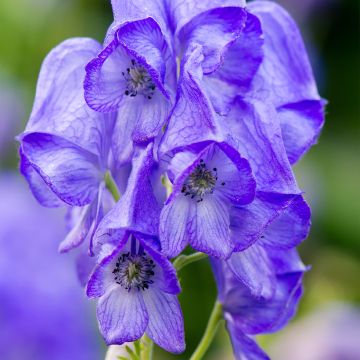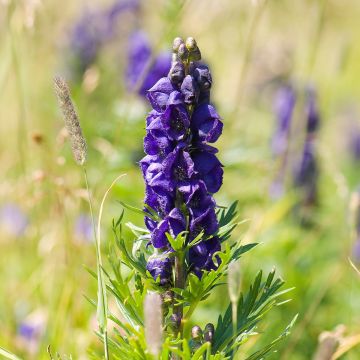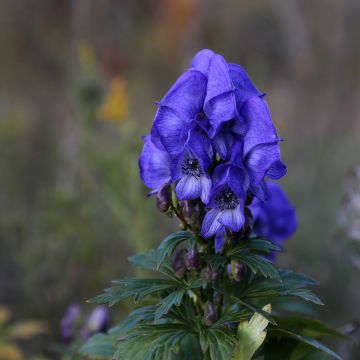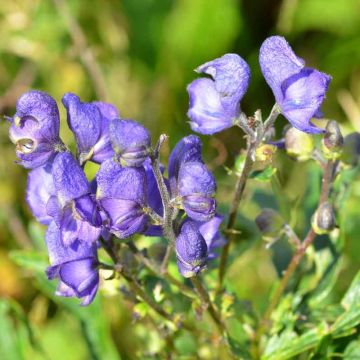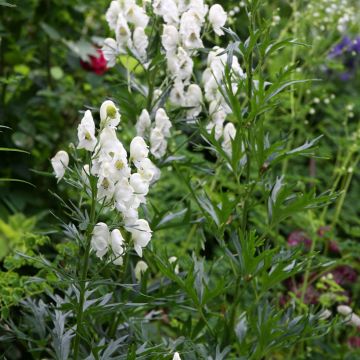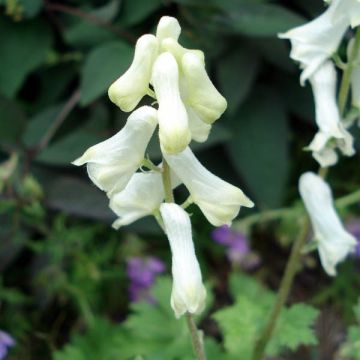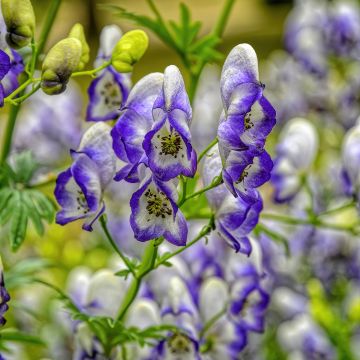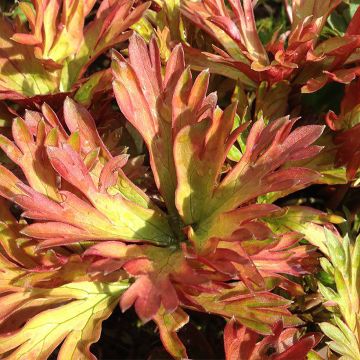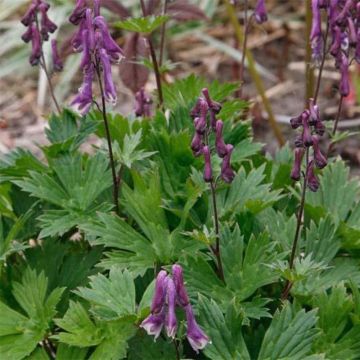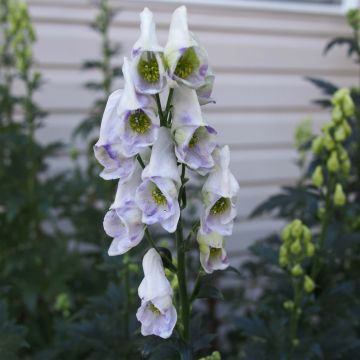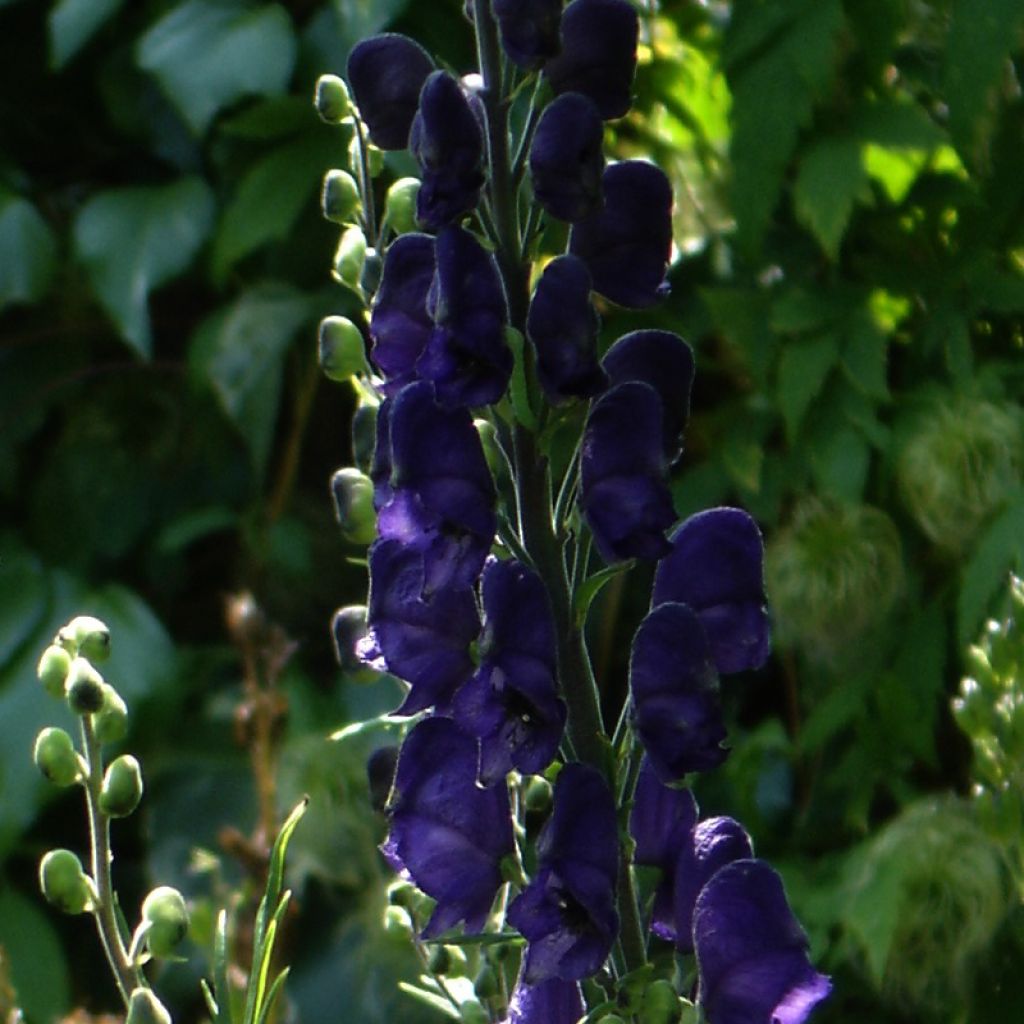

Aconitum henryi Sparks Variety
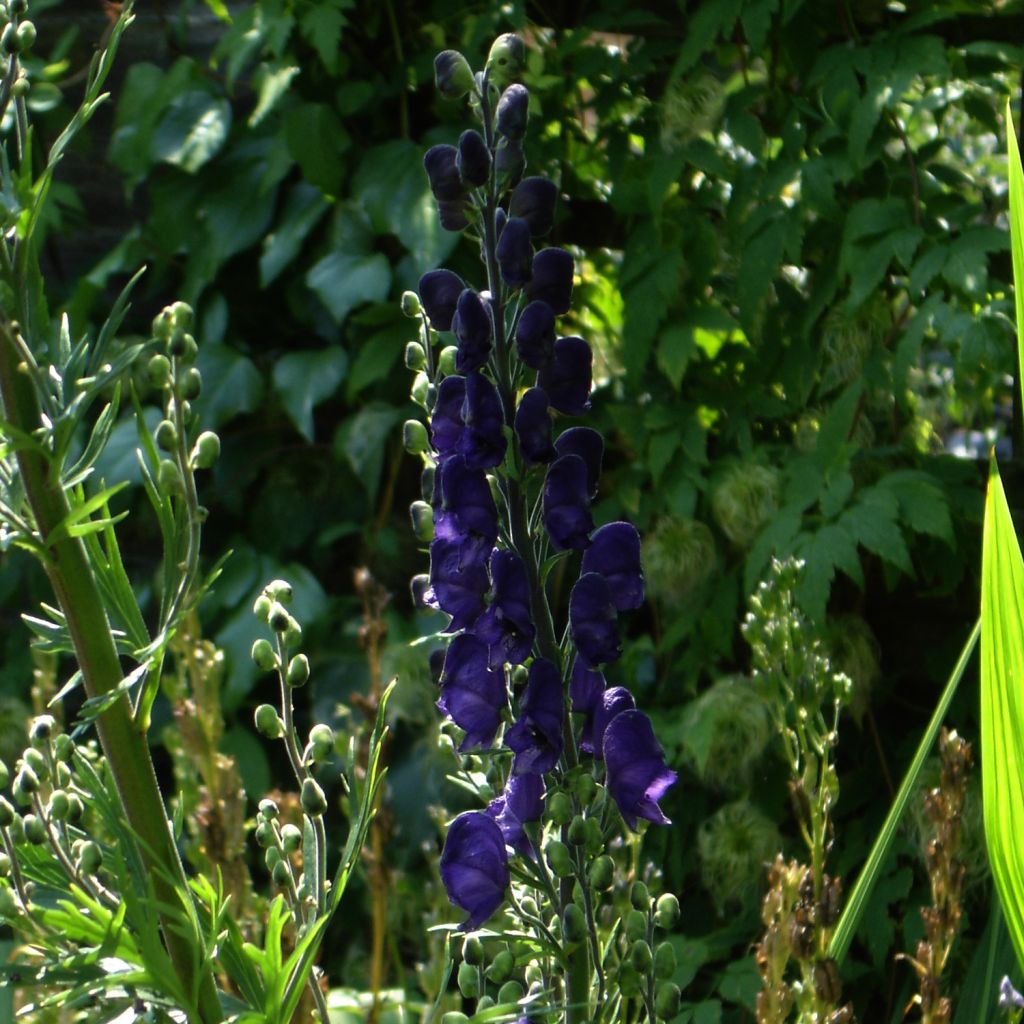

Aconitum henryi Sparks Variety
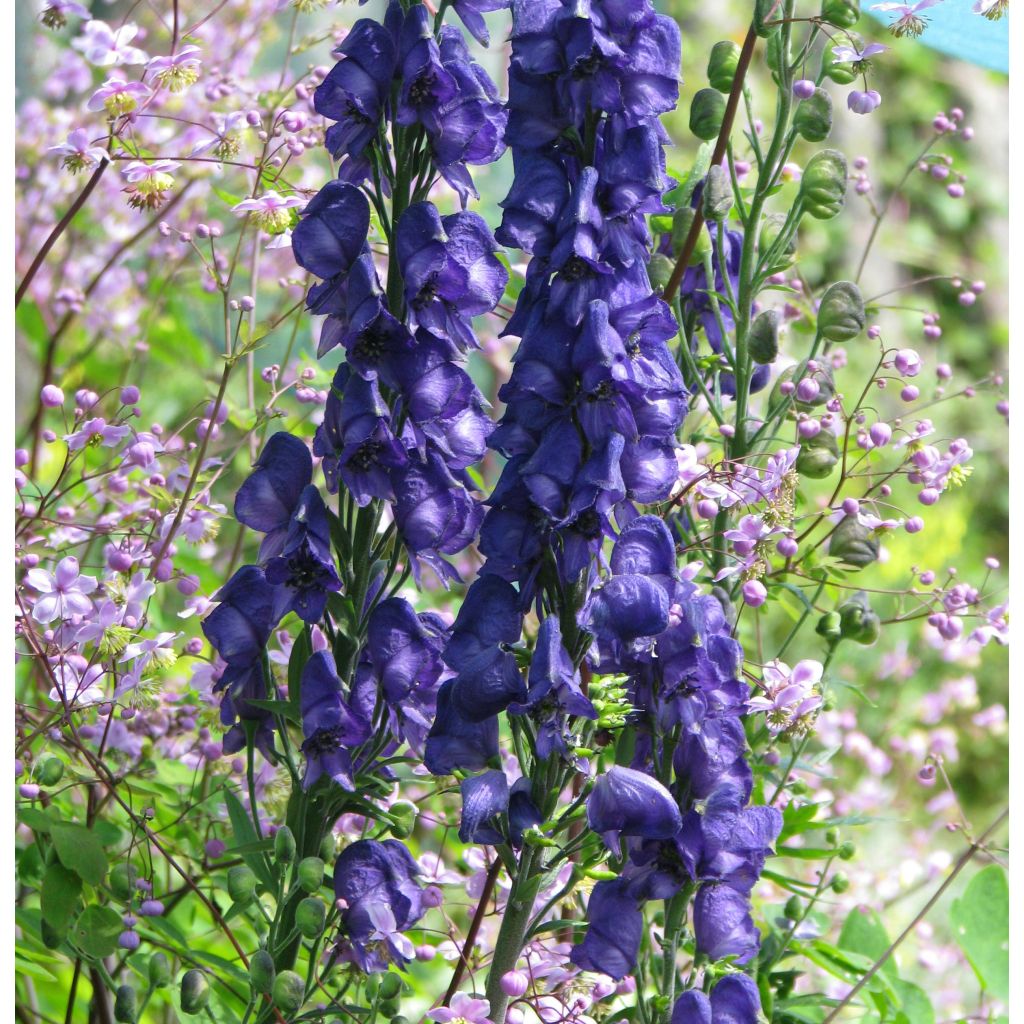

Aconitum henryi Sparks Variety
Aconitum henryi Sparks Variety
Aconitum henryi Spark s Variety
Spark's Variety' Monkshood, Henry's Monkshood
Why not try an alternative variety in stock?
View all →This plant carries a 12 months recovery warranty
More information
We guarantee the quality of our plants for a full growing cycle, and will replace at our expense any plant that fails to recover under normal climatic and planting conditions.
From €5.90 for pickup delivery and €6.90 for home delivery
Express home delivery from €8.90.


Does this plant fit my garden?
Set up your Plantfit profile →
Description
The Aconitum henryi 'Spark's Variety' is a giant perennial aconite, with fleshy roots and a somewhat ungainly habit. This horticultural variety of Chinese origin chooses the end of summer and the beginning of autumn to display its ramified spikes adorned with flowers of a very deep violet-blue, in the shape of a helmet. It bears thick glossy leaves on somewhat voluble stems. This favoured host of cool and rich soils is a reliable and floriferous plant, perfect for occupying the back of perennial beds, against which it often leans. All parts of the plant are highly toxic.
This old horticultural variety, considered a form of Aconitum henryi, was named by Prichard in 1898. The wild species is native to southern China, where it colonizes forests and thickets in medium-altitude areas. It belongs to the family of ranunculaceae. This perennial produces more or less voluble and flexible stems. Erect, they bend if they do not find a support to cling to. Its helmet-shaped flowers, dark violet-blue to deep midnight blue, as wide as they are tall, appear in September-October. They are very ramified terminal panicles, grouped in short racemes at the ends of the branches. This plant develops from a fleshy and tuberous root from which an erect tuft of slightly hairy stems emerges in spring, adorned with coriaceous leaves, tripartite and cut into 3 to 5 lobes. They are deeply veined, a very dark green in colour, with a pubescent underside. The flowering plant measures at least 1.45 m (5ft) in height, with a width of 30 to 40 cm (12 to 16in).
Aconites suffer from a bad reputation in the garden, due to their legendary toxicity, and it is quite regrettable because they have their place in every garden. They are robust, very hardy, and their foliage is among the most beautiful among perennial plants. Not to mention the blue of their flowering, an incredible blue comparable to that of gentians or delphiniums. They are perfect at the back of beds, among grasses like Miscanthus or cortaderia, against which they will lean, in the company of asters and chrysanthemums for magical autumn scenes. They can be planted among bushes, sheltered from the wind, which sometimes bends their stems, in the company of Japanese anemones. They are also very beautiful in front of the autumn foliage of Persian parrotia or liquidambars. Like foxgloves, they are good perennials for bright and cool undergrowth. Finally, their flowers are magnificent in bouquets.
Report an error about the product description
Aconitum henryi Sparks Variety in pictures
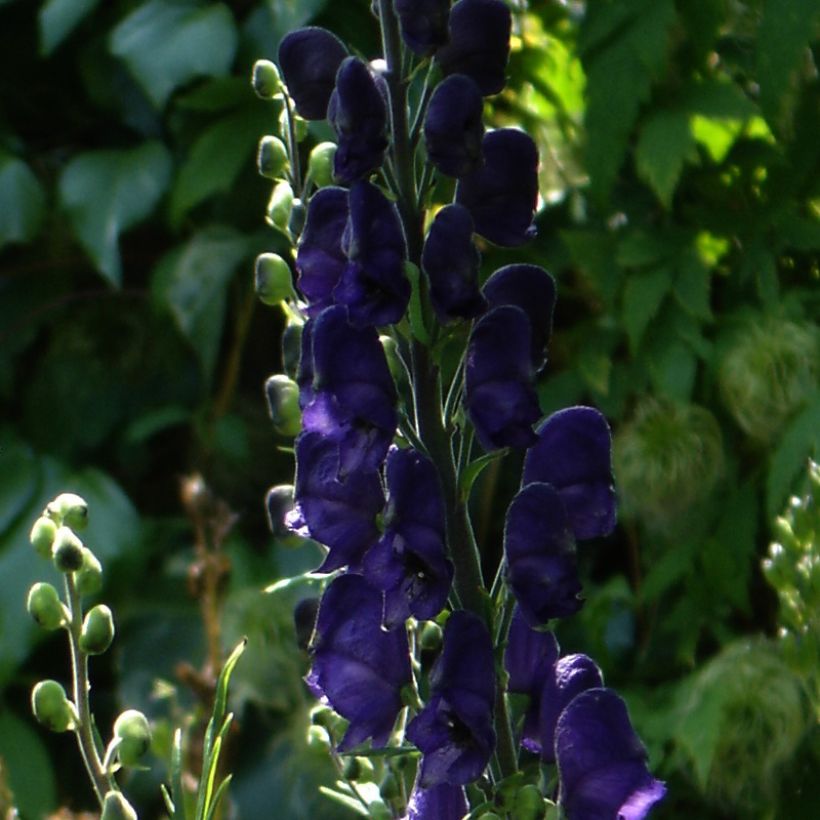

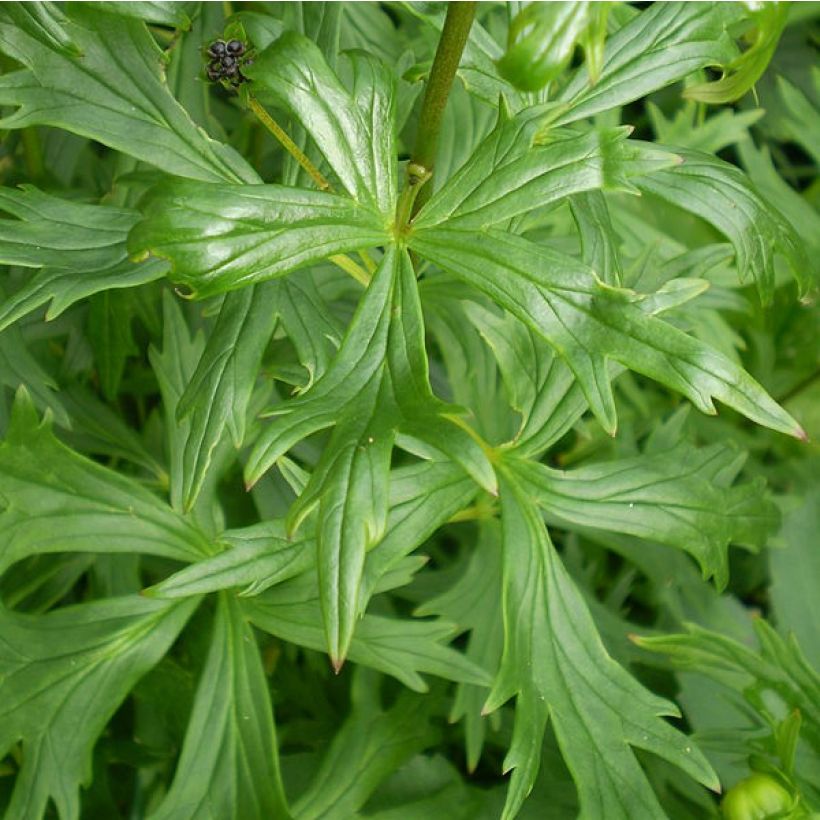

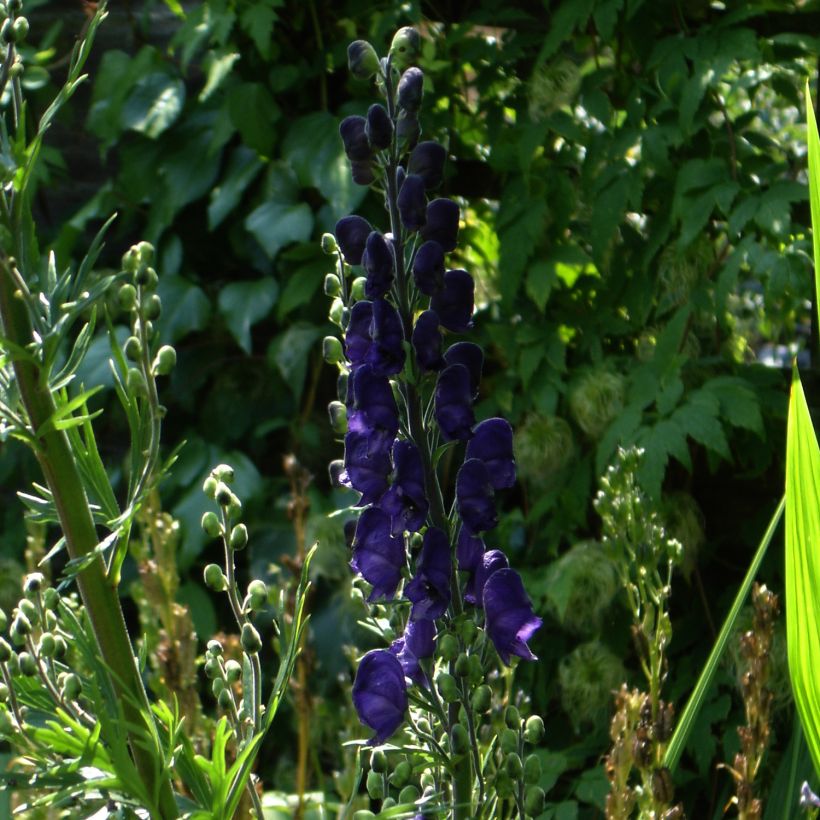

Flowering
Foliage
Plant habit
Safety measures
Botanical data
Aconitum
henryi
Spark s Variety
Ranunculaceae
Spark's Variety' Monkshood, Henry's Monkshood
Cultivar or hybrid
ingestion
Cette plante est toxique si elle est ingérée volontairement ou involontairement.
Ne la plantez pas là où de jeunes enfants peuvent évoluer, et lavez-vous les mains après l'avoir manipulée.
Pensez à conserver l'étiquette de la plante, à la photographier ou à noter son nom, afin de faciliter le travail des professionnels de santé.
Davantage d'informations sur https://plantes-risque.info
Other Aconitum
Planting and care
Planting period
Intended location
Care
-
, onOrder confirmed
Reply from on Promesse de fleurs
Haven't found what you were looking for?
Hardiness is the lowest winter temperature a plant can endure without suffering serious damage or even dying. However, hardiness is affected by location (a sheltered area, such as a patio), protection (winter cover) and soil type (hardiness is improved by well-drained soil).

Photo Sharing Terms & Conditions
In order to encourage gardeners to interact and share their experiences, Promesse de fleurs offers various media enabling content to be uploaded onto its Site - in particular via the ‘Photo sharing’ module.
The User agrees to refrain from:
- Posting any content that is illegal, prejudicial, insulting, racist, inciteful to hatred, revisionist, contrary to public decency, that infringes on privacy or on the privacy rights of third parties, in particular the publicity rights of persons and goods, intellectual property rights, or the right to privacy.
- Submitting content on behalf of a third party;
- Impersonate the identity of a third party and/or publish any personal information about a third party;
In general, the User undertakes to refrain from any unethical behaviour.
All Content (in particular text, comments, files, images, photos, videos, creative works, etc.), which may be subject to property or intellectual property rights, image or other private rights, shall remain the property of the User, subject to the limited rights granted by the terms of the licence granted by Promesse de fleurs as stated below. Users are at liberty to publish or not to publish such Content on the Site, notably via the ‘Photo Sharing’ facility, and accept that this Content shall be made public and freely accessible, notably on the Internet.
Users further acknowledge, undertake to have ,and guarantee that they hold all necessary rights and permissions to publish such material on the Site, in particular with regard to the legislation in force pertaining to any privacy, property, intellectual property, image, or contractual rights, or rights of any other nature. By publishing such Content on the Site, Users acknowledge accepting full liability as publishers of the Content within the meaning of the law, and grant Promesse de fleurs, free of charge, an inclusive, worldwide licence for the said Content for the entire duration of its publication, including all reproduction, representation, up/downloading, displaying, performing, transmission, and storage rights.
Users also grant permission for their name to be linked to the Content and accept that this link may not always be made available.
By engaging in posting material, Users consent to their Content becoming automatically accessible on the Internet, in particular on other sites and/or blogs and/or web pages of the Promesse de fleurs site, including in particular social pages and the Promesse de fleurs catalogue.
Users may secure the removal of entrusted content free of charge by issuing a simple request via our contact form.
The flowering period indicated on our website applies to countries and regions located in USDA zone 8 (France, the United Kingdom, Ireland, the Netherlands, etc.)
It will vary according to where you live:
- In zones 9 to 10 (Italy, Spain, Greece, etc.), flowering will occur about 2 to 4 weeks earlier.
- In zones 6 to 7 (Germany, Poland, Slovenia, and lower mountainous regions), flowering will be delayed by 2 to 3 weeks.
- In zone 5 (Central Europe, Scandinavia), blooming will be delayed by 3 to 5 weeks.
In temperate climates, pruning of spring-flowering shrubs (forsythia, spireas, etc.) should be done just after flowering.
Pruning of summer-flowering shrubs (Indian Lilac, Perovskia, etc.) can be done in winter or spring.
In cold regions as well as with frost-sensitive plants, avoid pruning too early when severe frosts may still occur.
The planting period indicated on our website applies to countries and regions located in USDA zone 8 (France, United Kingdom, Ireland, Netherlands).
It will vary according to where you live:
- In Mediterranean zones (Marseille, Madrid, Milan, etc.), autumn and winter are the best planting periods.
- In continental zones (Strasbourg, Munich, Vienna, etc.), delay planting by 2 to 3 weeks in spring and bring it forward by 2 to 4 weeks in autumn.
- In mountainous regions (the Alps, Pyrenees, Carpathians, etc.), it is best to plant in late spring (May-June) or late summer (August-September).
The harvesting period indicated on our website applies to countries and regions in USDA zone 8 (France, England, Ireland, the Netherlands).
In colder areas (Scandinavia, Poland, Austria...) fruit and vegetable harvests are likely to be delayed by 3-4 weeks.
In warmer areas (Italy, Spain, Greece, etc.), harvesting will probably take place earlier, depending on weather conditions.
The sowing periods indicated on our website apply to countries and regions within USDA Zone 8 (France, UK, Ireland, Netherlands).
In colder areas (Scandinavia, Poland, Austria...), delay any outdoor sowing by 3-4 weeks, or sow under glass.
In warmer climes (Italy, Spain, Greece, etc.), bring outdoor sowing forward by a few weeks.

































